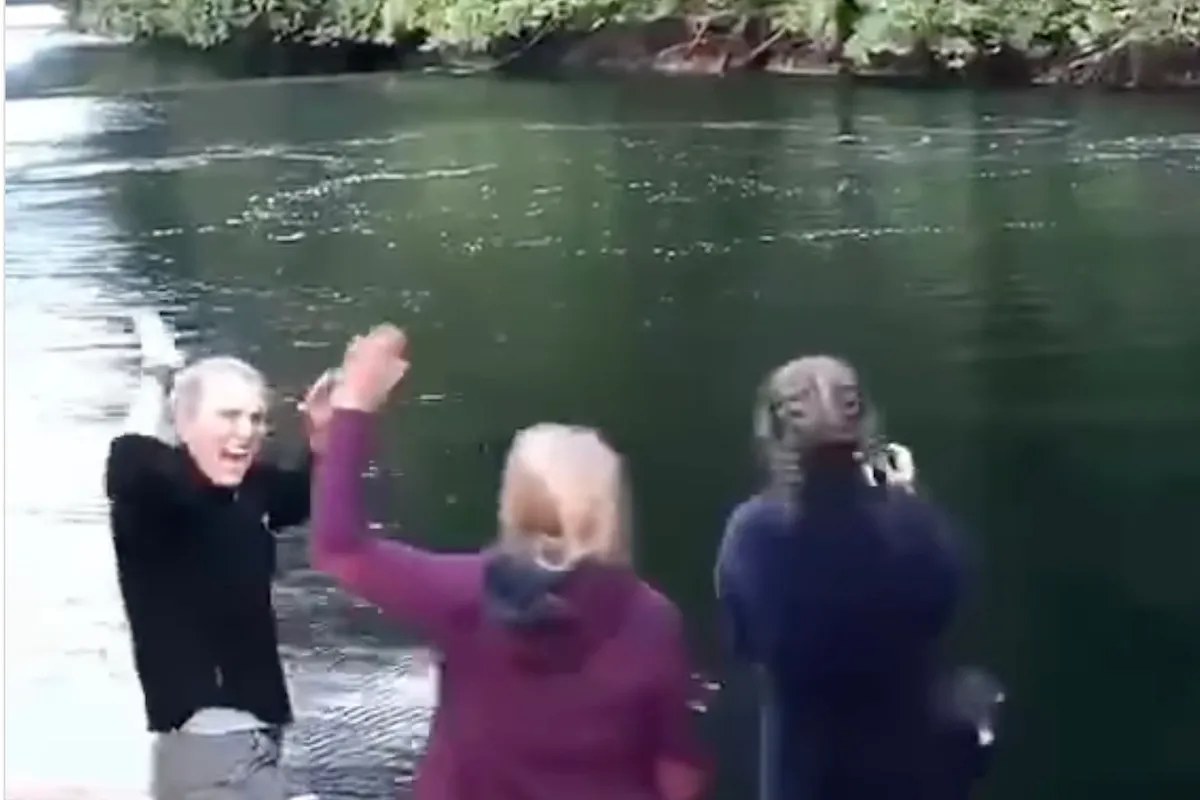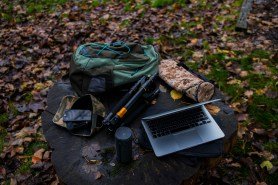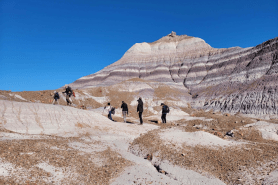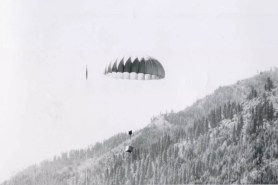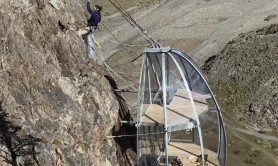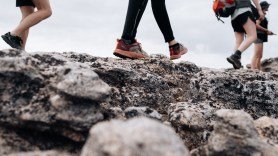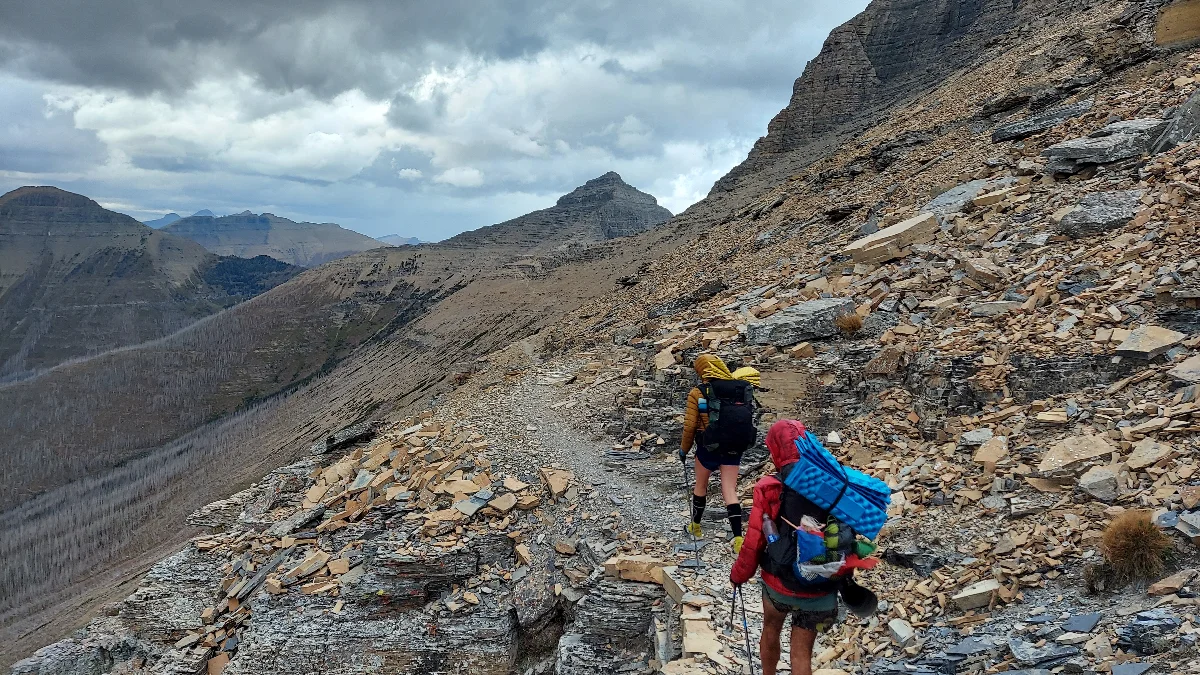

The idea of walking a trail from end-to-end is appealing, romantic even. You could take five months and walk thousands of miles from Mexico to Canada. People do it every year, why not you? All it takes is putting your regular life on pause for half a year. I’ll tell you a secret about thru-hiking, too. The pause never truly ends. If you’re not careful, you’ll end up freeing yourself from society’s expectations and living authentically. If that sounds appealing, keep reading. Here’s how to make 2024 the year of your first thru-hike.
Videos by Outdoors
The First Choice: Which Trail?
Realistically, going straight for one of the triple crown trails is ambitious. The AT, PCT, and CDT will all ask a lot of you. That’s not to say you can’t do it. The AT is a particularly common choice for first-timers, though the PCT is increasing in popularity for green thru-hikers too. If I were to tell you not to make this call, I’d be a hypocrite, because the PCT was my first thru-hike attempt. Chances are, you’re more ready already than I was back then, so don’t sell yourself short.
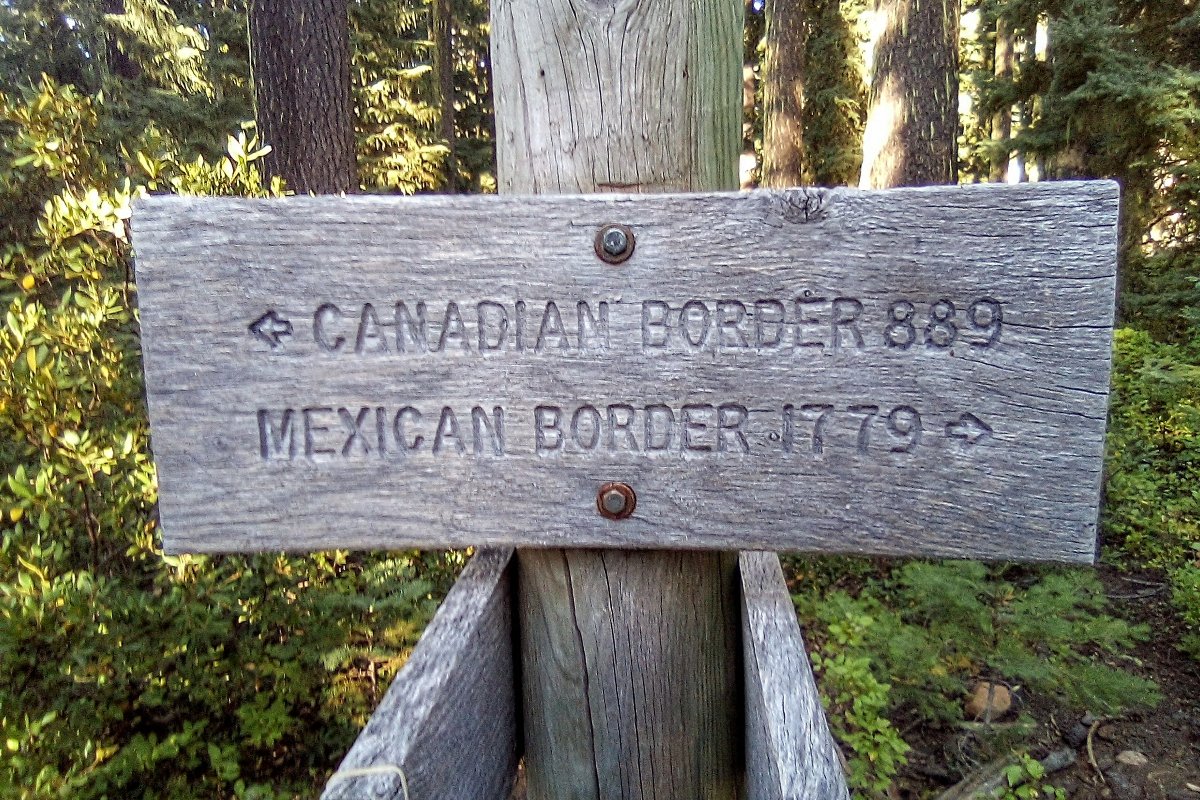
What Are Some Shorter Options?
A shorter trail is a reasonable call, and they offer comparable, life-changing experiences. Some great choices for a first thru-hike would be The Colorado Trail, The Arizona Trail, The Long Trail, or The John Muir Trail. In terms of how long you’ll be hiking, these trails range from one to three months. They offer a testing ground for how much you actually enjoy backpacking. A first thru-hike on any of these trails is not quite long enough to completely disrupt your life, but just long enough to get you hooked.
Permits for Thru-Hikes
Permits are a whole can of worms. With some trails, like the John Muir Trail or the PCT, you’ll need a permit to hike them at all. Others may have sections through popular national parks that require permits, though sometimes there are loopholes where if you don’t camp in those sections, you don’t need to bother with permits. You can find a good, comprehensive guide to triple crown permits here. It’s a good idea to take care of these logistics on the front end, so you don’t get your heart set on a trail then find yourself disappointed when you don’t win the lottery.
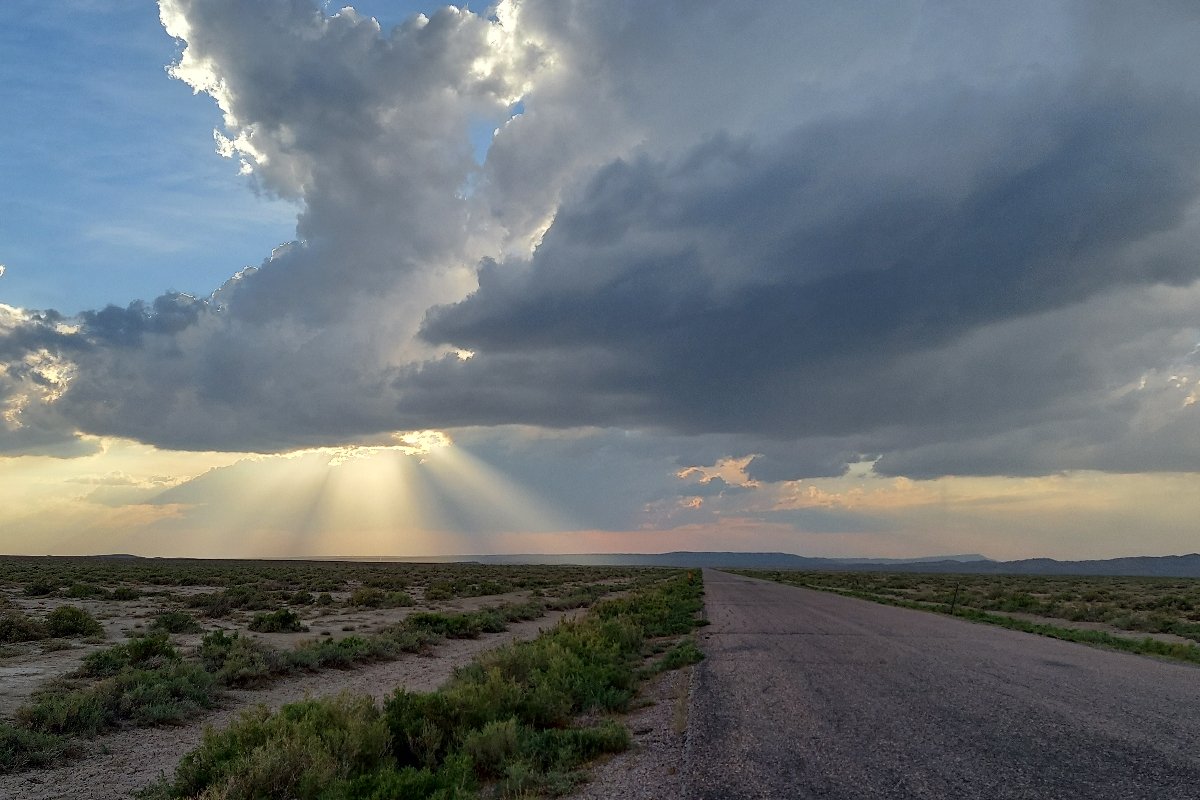
How to Start Approaching Thru-Hike Logistics
Logistics is one of the highest barriers for entry to a thru-hike. One friend used to say, “You’re not a real thru-hiker unless you quit your job.” While this is absolutely not true, he makes a point about the level of commitment needed, especially for a triple crown hike. Everybody’s situation is different, but you’ll probably want to sublet your apartment, apply for a leave of absence from work, and just generally start considering such things. A lot of people embark on thru-hikes when they’re already in transitional periods, which might be why you find yourself reading this article. So where do you go from here?
Maps and Navigation
The number one navigation tool for most thru-hikes is an app called FarOut (formerly Guthook.) Why this app, specifically? It’s not the only way to navigate, but what it has is community. It is extremely helpful to have live, up-to-date comments on FarOut from the hikers ahead of you on trail. They can let you know if water sources are still running, who’s offering rides from trailheads, and the best places to stay in town. This is probably your number one resource for navigation and community interaction on your thru-hike.
Other great navigational resources include CalTopo, an incredibly robust and helpful route-planning tool. If you want to have paper maps as a backup, CalTopo is a great resource with quality topo lines to print out and mark up. Gaia is another good secondary resource. You can plan new routes on the fly, find forest roads that may not be on FarOut, and more.
Check out our list of watches for hiking.
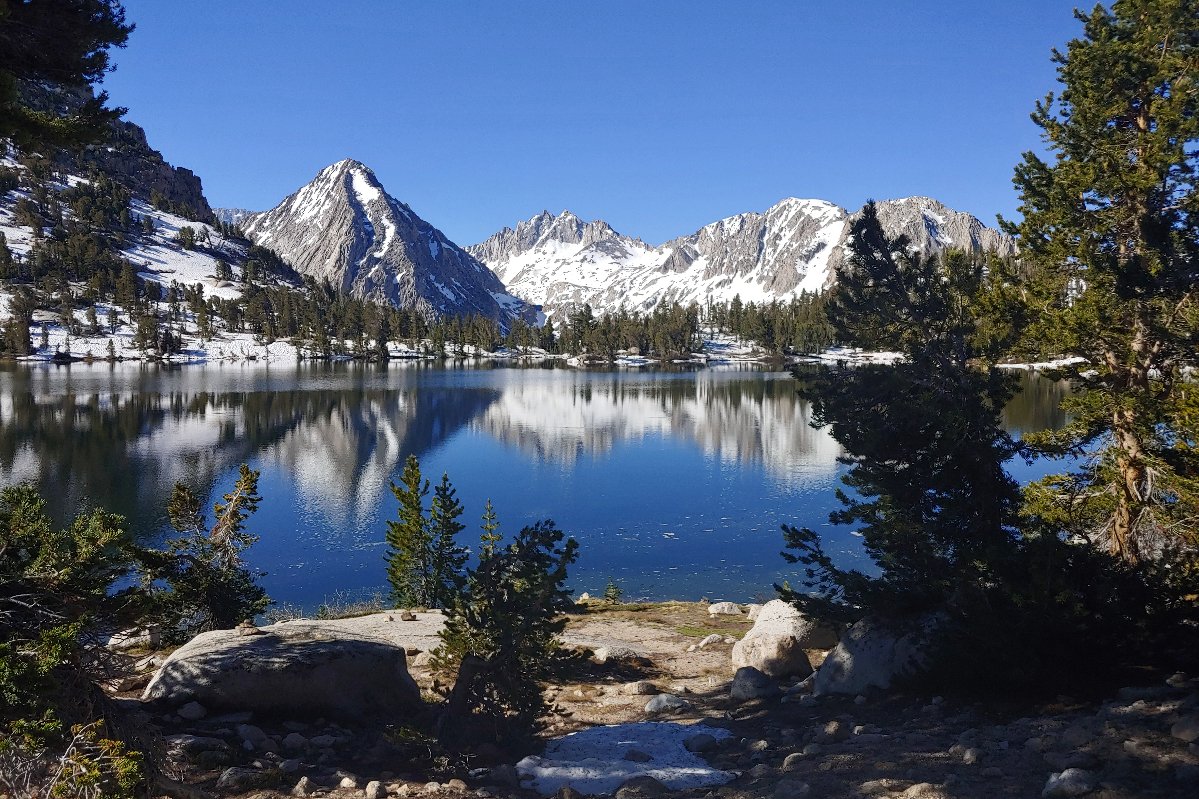
Getting to the Terminus
Often, these thru-hikes start in pretty remote places. There are often shuttles to and from the terminus operating out of nearby towns. I would advise checking out Facebook groups or other online resources to see what community support is available to you, specific to your trail. Search the name of your trail alongside “trail angels,” and you might luck out.
Start Looking at Resupplies
Look at your trail of choice on FarOut. Look at the terminus, then follow the red line to your next road or town. How many miles is that? How many miles do you think you can walk in a day? Somewhere around 15 is a good benchmark for beginners, but that equation will show you how many days of food you’ll need. You’re just stringing together shorter backpacking trips, stopping in town to (hopefully) shower and resupply on food every 4-7 days. Every trail is different, but you can often just go to the grocery store in town. In especially remote towns, you may have to prepare a resupply package and send it to the local post office.
You’ll also want to start thinking about how comfortable you are hitchhiking. Most often, you’ll arrive at a road and need to catch a ride into town. Hitchhiking may not be necessary, but it is most thru-hikers’ options of choice. It’s smart to do it in groups, but also, it’s different hitchhiking around trail towns than in random places across the U.S. Locals know the thru-hikers that come through and are often happy to help out. If you’re not comfortable hitching at all, you’ll just need to do more logistical groundwork. You’ll want to research established trail angels or shuttles in each town you’ll stop in, and make contact or schedule those ahead of time.
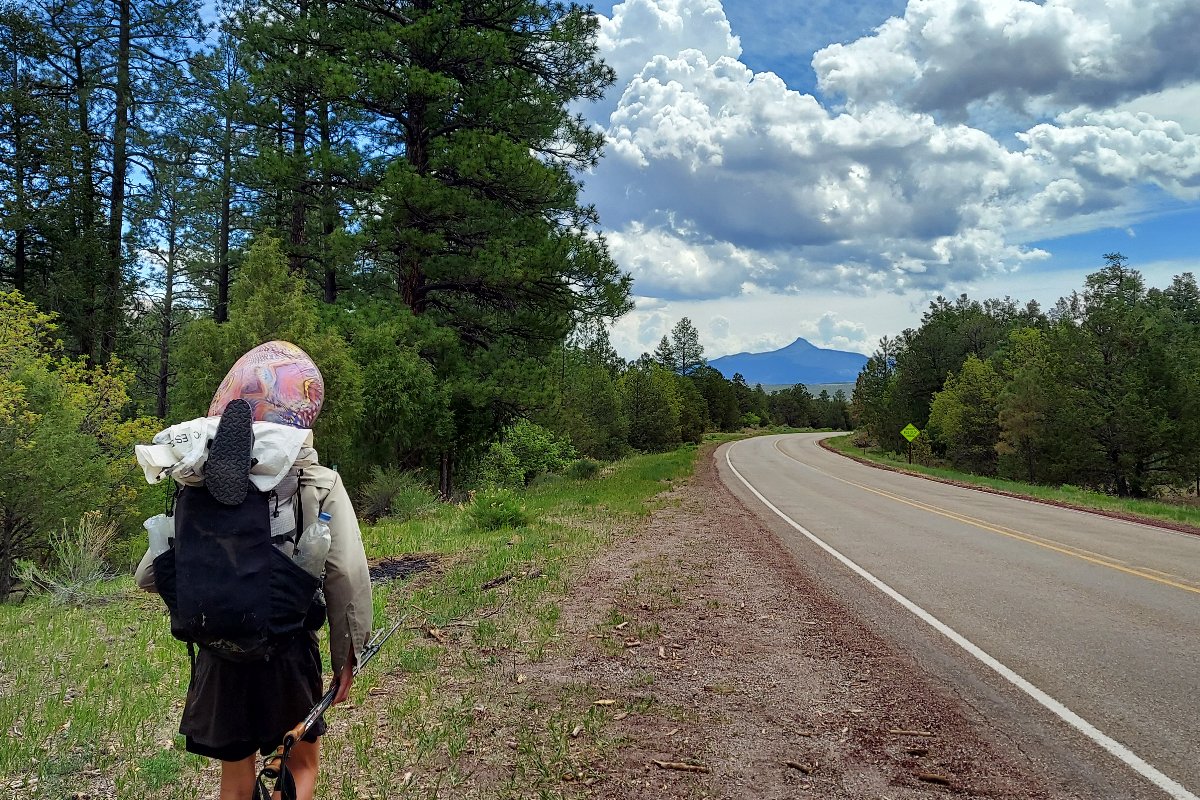
What to Bring on Your First Thru-Hike
There is a lot to be said about thru-hiking gear. “Every ounce counts” is a phrase to live by. While I wish I could walk you through your personal gear list, everybody is different in terms of where they’re starting and what they can carry. There are a huge amount of gear lists available online, and I would recommend checking out several of those, thinking about your own personal needs, your trail’s specific conditions, and going from there.
I’ve written out some more in-depth gear guidelines here, but if I had one piece of advice for you to follow it’s this: do a shakedown hike. Get your backpack as close as possible to what it will be like on trail, including food and water. Then, go hike all day. Don’t stop at five or six miles. Take a weekend day and try to do at least 15 miles. See how that feels, and what you’re inspired to get rid of afterward.
What Will You Eat?
Food is another incredibly personal choice. Here, again, is a more in-depth guide. There’s a few major takeaways. First, focus on fat content for quick, efficient energy, some protein too, of course, and then a big dose of carbs at the end of the day. When you get into town, supplement your mediocre trail diet with as many fruits and vegetables as possible, (along with a greasy, delicious burger.) Keep an eye out for vitamin and mineral content. In fact, packing out some multivitamins may not be a bad call for folks who are prone to deficiencies. Beyond that, simply experiment with what you like and try to switch it up. If you find yourself losing weight too fast, you may undergo some serious fatigue, and we don’t want that.
Water is Life
The standard among thru-hikers is simply bringing along a Sawyer. Go for the full-size one, especially on longer thru-hikes. You’ll be pushing a lot of volume through there. Iodine tablets and other purification methods are completely valid options too, though less common.
A big part of your logistical considerations will be “water carries,” long stretches on certain trails without water. On the PCT or the CDT, these can get up to 20+ miles without water, so you need to have a water bladder of some sort along with your bottles. Know what your longest water carry will be before you go, and make sure you have the capacity to carry what you need. 1 liter for every 5 miles is an okay benchmark, but it’s not that simple. You’re not just measuring distance, you’re measuring time. You need to factor in how many breaks you’ll take along the way and how long. I recommend bringing at least an extra liter for safety until you understand your body and your needs well. When you’re looking at water sources on FarOut, for your own sake, check the comments. Look for up-to-date info on whether or not the stream is running, and if you’re not sure, don’t rely on it.
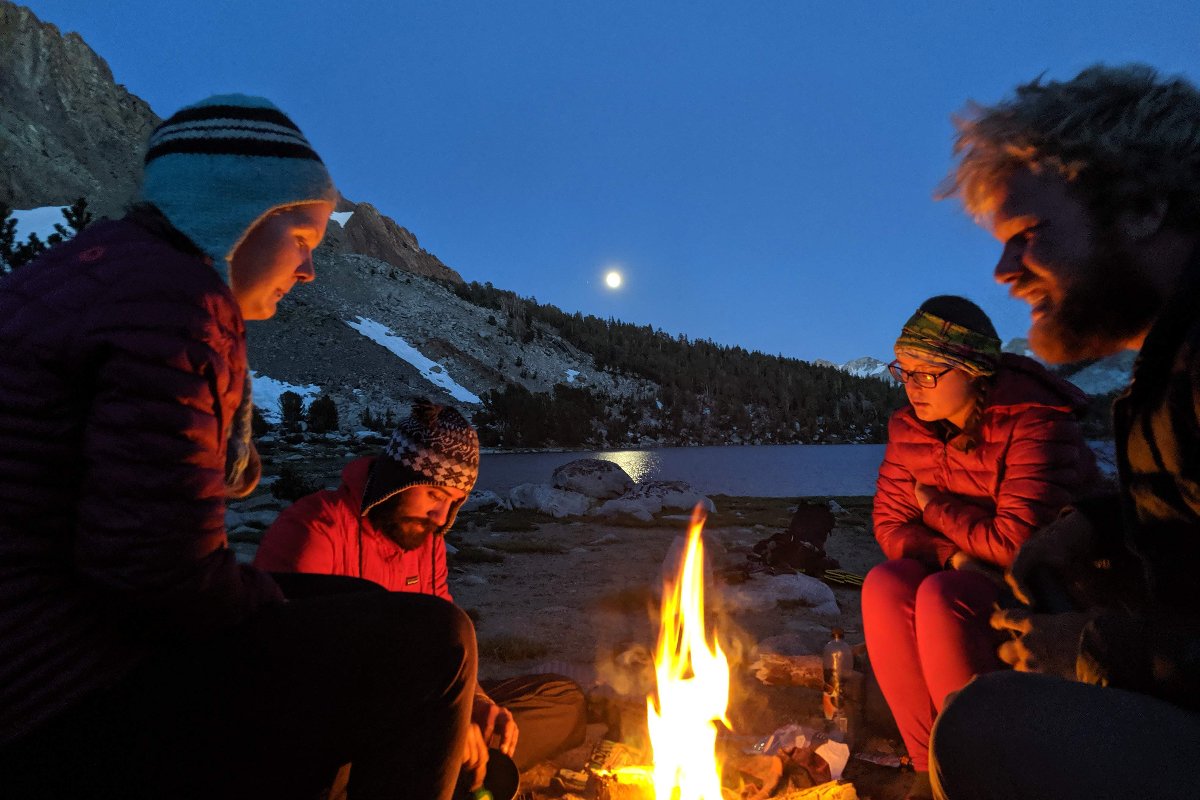
Hygiene, It’s Still Kind of Important
I mean, it’s not that important, but you don’t want it to fall completely by the wayside. Don’t pack deodorant. Clip your nails occasionally so you don’t lose any. Some hikers bring along wet wipes or trail rags to give themselves a good wipedown in their tent at night. It’s not necessary, but it can help you from getting too uncomfortable. If you’re on the AT, you should be checking yourself for ticks every night.
The more important aspect of this is where and how you use the bathroom. It’s gross, but it’s actually one of the most important Leave No Trace responsibilities you have as a thru-hiker. Especially on the more popular trails, human waste can have a serious impact on the environment. Do your research on how to do this right, stay on top of it, and pack out your TP.
The Physical Aspect
You should definitely train for your thru-hike. I was young and dumb and didn’t really, and it was hell for the first 150 miles. Training can help prevent injury and just generally make it a more enjoyable experience. I will say that there’s no way to make the transition into thru-hiking painless. You just can’t get used to hiking all day every day until you do it. The only way to get your trail legs is to suffer through that initial adjustment.
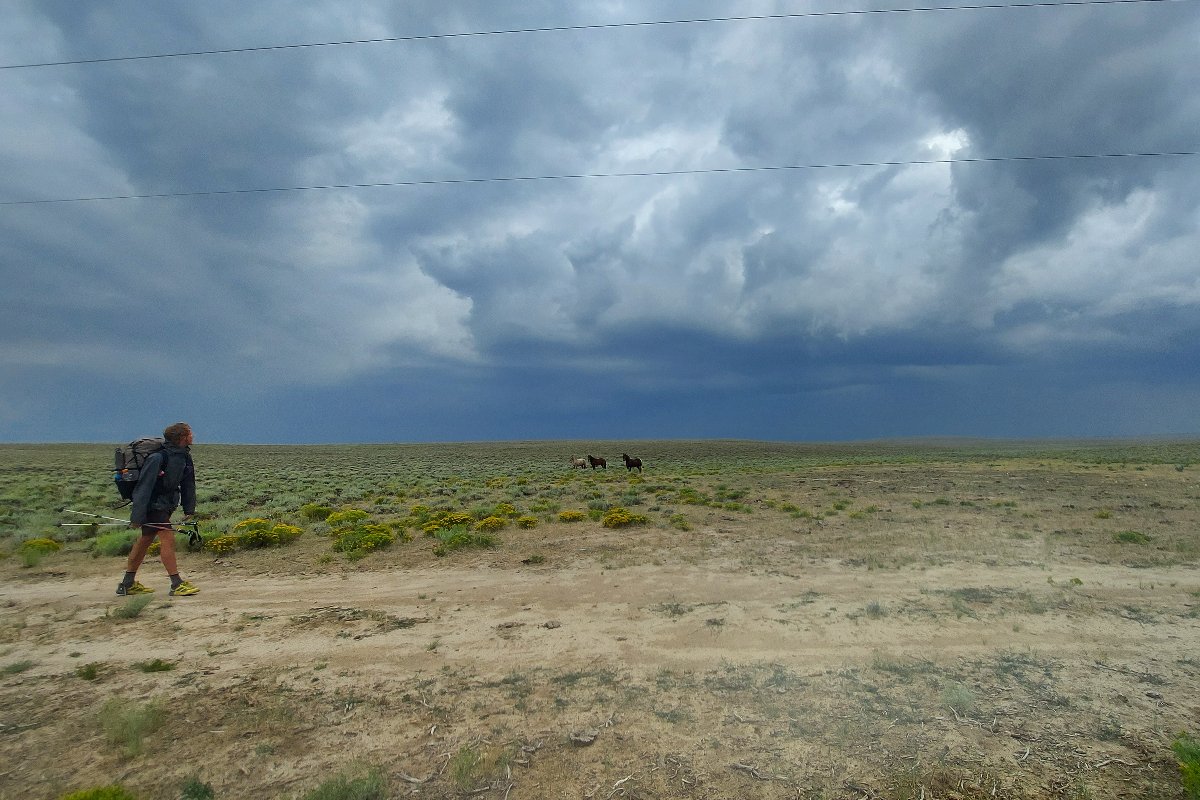
Hiking at a Blistering Pace
As far as physical pain goes, unless you have a pre-existing injury, I worry mostly about blisters and chafing. I go a little bit into choosing socks and shoes here, but just make sure you get shoes that breathe well and have room for your feet to swell. There’s a few key points to blister prevention. Know where they come from: friction, moisture, and heat. The best blister care is preventative, so if you feel the hot spot, take off your shoes and tape it.
Anti-Chafe Technology
When it comes to chafing, it’s also helpful to consider where it comes from. For me, the problem is when I hike for a while, stop moving, stop sweating, and then my skin is moist and full of friction. It’s when you’re getting ready to leave a break that you’ll want to apply your Gold Bond or Body Glide or remedy of choice. Again, the key is prevention. Once it’s started, it’s started, so don’t let it start.
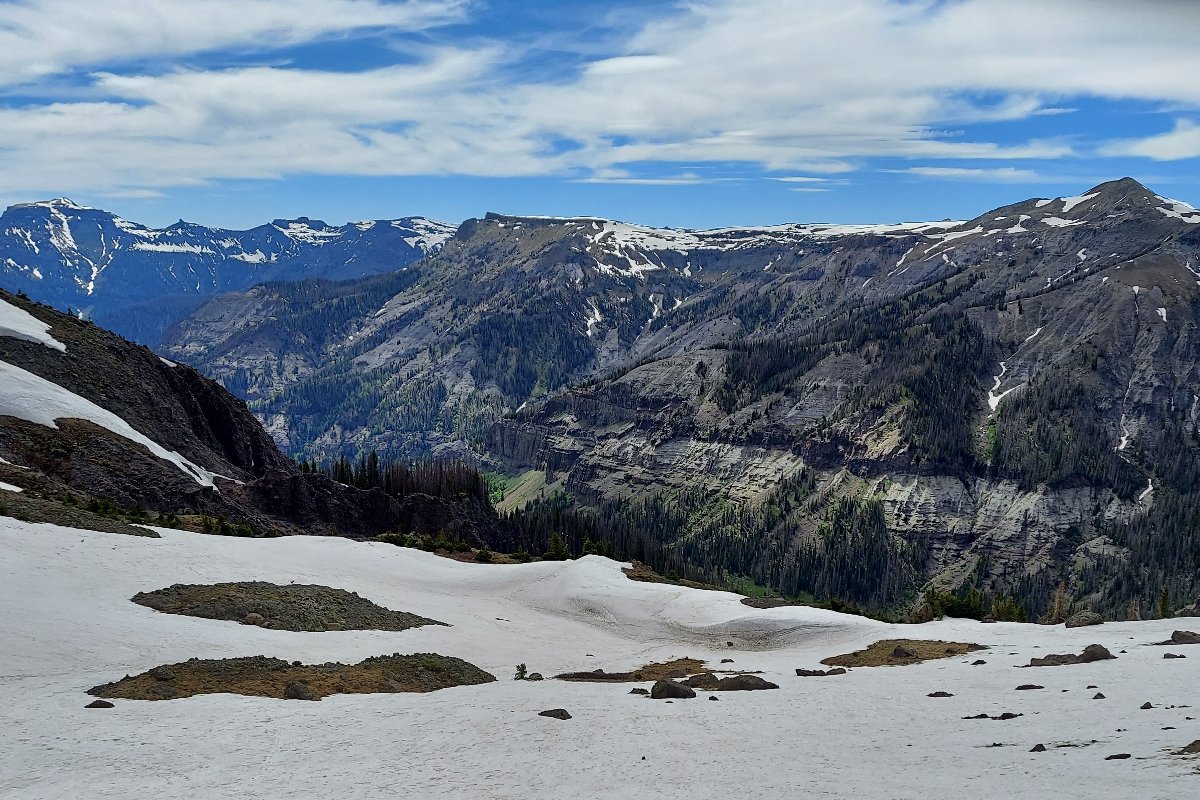
The Mental Aspect
There’s a lot to learn from thru-hiking, and nothing changes you quite like your first thru-hike. The most important aspect of your thru-hike is you, your wilderness experience, and how it changes you. I’ll mention some things you might learn along the way, but first, let’s talk about how to set your expectations.
Romanticize It, But Don’t Over-Romanticize It
If people quit on their first or second day thru-hiking, it’s often because the experience is not what they were expecting. Yes, this experience will be magical. It’s also going to be really, really hard, not only physically but mentally. Thru-hikers say “Don’t quit on a bad day” because there are plenty of bad days. The AT has a phenomenon called “The Virginia Blues,” while the PCT has “The NorCal Blues,” both of which are periods where most thru-hikers tend to get beat down. There may not be a way to prevent this, but it’s better to be ready for it. You’ll find yourself regulated in new ways through exercise and fresh air and new experiences, but the mental and emotional difficulties of your life will still, in part, be with you.
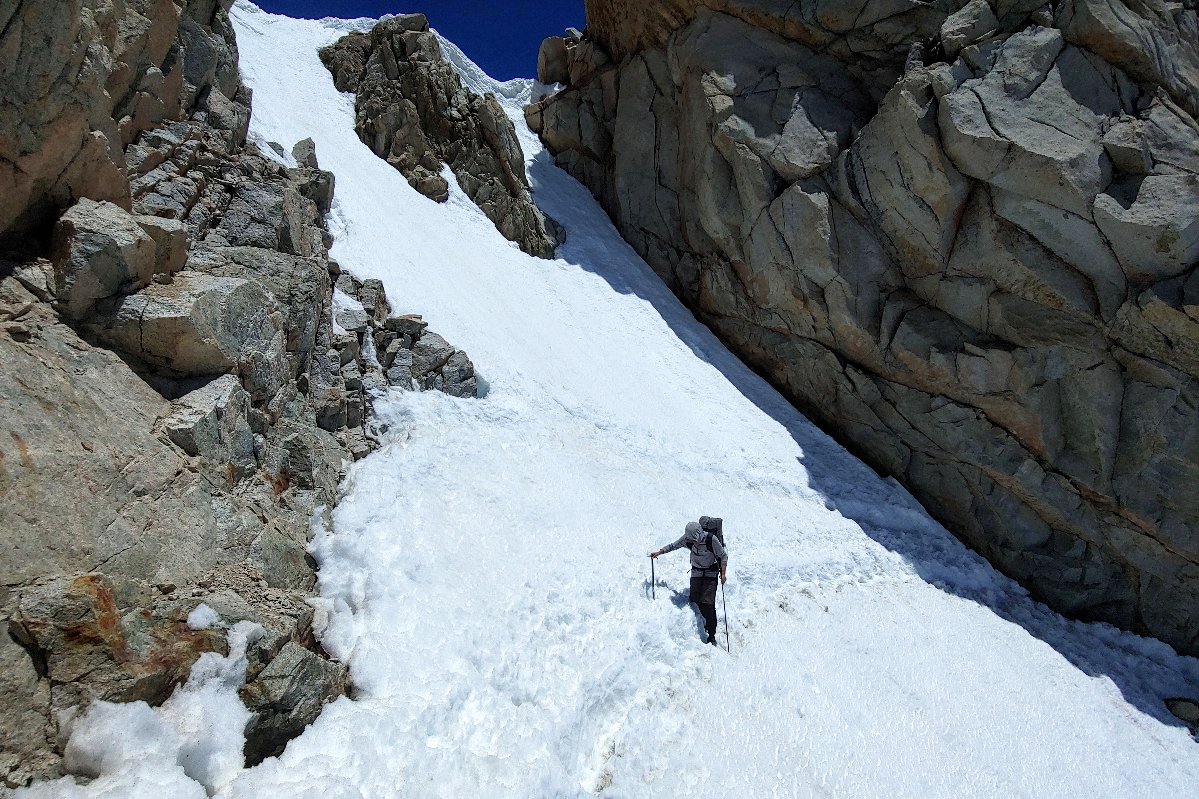
It’s Still Worth It
A thru-hike is a crazy thing to do. It’s a big undertaking. If you manage it, what you learn along the way will be based on your experience. Personally, I realized that most of my perceived obstacles in life were obstacles I placed on myself. I have stopped telling myself that things are impossible. Instead, I try them out and let the results tell me whether or not it’s possible. Most people, across the world, are swept up in the current of their lives. In the United States, often we’re just riding the pipeline from school to university to job. A thru-hike is a really great way to step out of that current. It gives you a chance to step back, live a simple life, and realize that you have every ability to craft your own life into what you want it to be. It’s in your hands, or is it on your feet?
CHECK OUT THESE OTHER YEAR-END STORIES FROM OUTDOORS.COM:
- The Year in Outdoors: A Look Back at 2023
- The Year in Outdoors: People of the Year 2023
- The Year in Outdoors: 2023 Saw Some Great New Gear—Here Are a Few Favorites
- The Year in Outdoors: Our Top 10 Stories in 2023 (Plus 10 You May Have Missed)
- The Year in Outdoors: New Mosses, Mushrooms, and Other Forest Things Discovered in 2023
- The Year in Outdoors: New Animal Species Discovered in 2023
- The Year in Outdoors: Our Favorite Creators, YouTubers, and Podcasters of 2023
- The Year in Outdoors: These Were Some of the Most Heartwarming, Epic, and Outrageous Outdoor Videos of 2023
